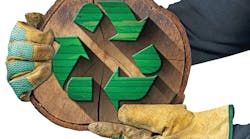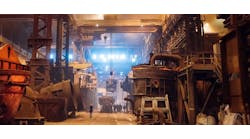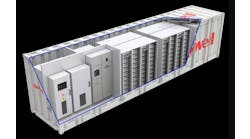Who knew algae could be so good for you, or that you just might find it delicious? While you may be used to thinking of algae as those green microorganisms typically found in water near the beach or on the underside of rocks in the forest, it’s quickly becoming a super-product used by multiple industries focused on creating a more sustainable world. Process automation technologies are helping supercharge its production for everything from candy to cosmetics and building materials to biofuels.
Bernd Herrmann, CEO of Croatia-based Phyox d.d., knows the potential of algae all too well. The former shrimp farming executive had an epiphany when he looked closely at the micro-algae farmed as a byproduct along with the shrimp. He saw the potential of photoautotrophic protozoa as food, dietary supplements and animal feed, among other uses. The key to making it a viable business venture was, of course, the ability to ramp up commercial production in an efficient and sustainable manner, befitting the potential marketing value of algae.
“Algae needs carbon dioxide (CO2) to survive,” Herrmann explained.
Therefore, concentrations of CO2 in the plant must be continually monitored to safely control the algae’s growth process. Phyox uses CPS71E pH sensors from Endress+Hauser to indirectly measure the pH value of the algae. It also uses Memosens 2.0 digital sensing technology for extended storage of calibration and process data for predictive maintenance. Pre-calibration in the lab and quick onsite sensor replacement maximizes process uptime. Cell concentrations are monitored by a Turbimax CUS52D turbidity sensor. Conductivity is measured using a Memosens CLS82D. All sensors are installed in the outlet basin via immersion fittings, and connected to a Liquiline CM444 multichannel transmitter. The flow rate at which the algae suspension moves through the system is recorded by a Promag 10D magnetic-inductive flow sensor.
That’s a lot of technology, but the results have created a productive process that’s better than anything Herrmann could have imagined. These days, he’s putting worries about commercial production behind and concentrating on the marketability of the algae that Phyox cultivates.
“It can lead to healthier products,” he said, adding that oxygen is a waste byproduct of algae. “Algae is 50% proteins, so it’s a superfood. In addition, it’s use can lead to a CO2 reduction.”
Sustainable control
“It’s about aligning and reconciling what you use,” said Julia Schempp, CSR officer at Endress+Hauser, during a panel discussion at the forum. “It takes a concerted effort to reach aggressive goals.”
Her fellow panelists agreed, pointing out that suppliers and producers must work together. “Most companies issues CO2 targets, and 80% of the footprint is generated outside their company,” said Michael Sinz, director of strategic business at Endress+Hauser. “You have to talk to the suppliers about their footprint as well. It’s a joint effort.”
Sinz added that he sees changes in investments by companies to reach those goals. The challenge for companies around the world is to grow sustainable products with fewer resources, and that’s where investment in process automation comes into play.
Boundless opportunities
Global plastic waste is predicted to nearly triple by 2060, according to a report from the Organization for Economic Cooperation and Development (www.oecd.org). That’s left many believing the world needs to quickly move from a linear economy (where products are made, used and disposed of) to a circular economy (where products are made, used and recycled.)
Moos said manual recycling processes have limitations. Not every plastic can be recycled manually, which leads to sorting. Plastics’ chemical compositions aren’t altered in mechanical recycling. Chemical recycling can be used for more complex plastics and doesn’t require sorting. It can recycle most plastics together, making recycling more convenient for many people.
The good news is that chemical recycling is already a reality. Moos cited several examples of companies using products that have been chemically recycled including Kit Kat candy bar wrappers, Magnum ice cream tubs, and Vaude outdoor wear. Mercedes even makes door handles from chemically recycled plastic.
Analytik Jena provides technology for use in chemical recycling plants. Its Inductively Coupled Plasma Optical Emissions Spectrometry (ICP-OES) technology is used for rapid element analysis. The technology has a large measurement range. The company’s PlasmaQuant 9100 Elite ICP-OES device is used for analyzing pyrolysis oil in plastics, a process that in the past could be problematic and expensive. However, the process is necessary for quality control in chemical recycling.
Another industry making strides to help promote industrial sustainability is hydrogen energy. Hydrogen is a key element in the decarbonization of energy. Green hydrogen, in particular, can reduce emissions from transportation and industry. Green hydrogen is derived from renewable energy sources as opposed to blue hydrogen, which is derived from natural gas.
Jens Hundrieser, regional industry manager for Endress+Hauser, showed the audience in Basel how green hydrogen is produced through electrolysis, as well as the process automation technology involved in creating an efficient process for developing the emerging energy source. The process requires numerous flow, temperature and pressure sensors, but electrolyzers are the heart of the process.
No matter what the project, one thing is certain: innovative and sustainable operations are popping up more and more as process automation technology helps make their operations more efficient and less costly.








